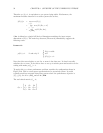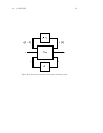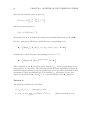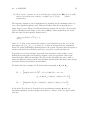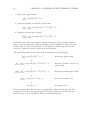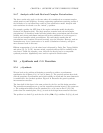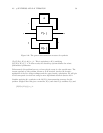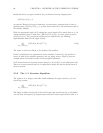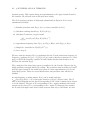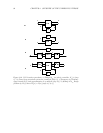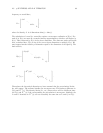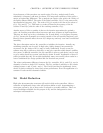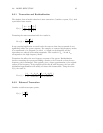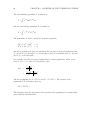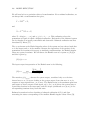60 CHAPTER 2. OVERVIEW OF THE UNDERLYING THEORY
Recall that this is an upper bound for the µ problem of interest, implying that,
µ[F
l
(P(s),K(s)] ≤ 1,
as required. However the upper bound may be conservative, meaning that in order to
guarantee that µ[F
l
(P(s),K(s)] ≤ 1, we have had to back off on the performance and/or
the stability margins.
With the appropriate choice of D scalings the upper bound will be much closer to µ.In
otherwords there exists D such that, DF
l
(P(s),K(s))D
∞
is a close upper bound to
µ[F
l
(P(s),K(s)]. The µ-synthesis problem can be replaced with the following
approximation (based on the upper bound):
inf
D∈D
K(s) stabilizing
DF
l
(P(s),K(s))D
−1
∞
. (2.18)
The reader is referred to Doyle [1] for details of this problem.
If this is considered as an optimization of two variables, D and K(s), the problem is
convex in each of the variables separately, but not jointly convex. Doyle [2] gives an
example where this method reaches a local nonglobal minimum.
D-K iteration involves iterating between using D ∈Dand K(s) to solve Equation 2.18.
There are several practical issues to be addressed in doing this and we discuss those in
the next section.
2.5.2 The D-K Iteration Algorithm
The objective is to design a controller which minimizes the upper bound to µ for the
closed loop system;
inf
D∈D
K(s) stabilizing
DF
l
(P(s),K(s))D
−1
∞
.
The major problem in doing this is that the D-scale that results from the µ calculation
is in the form of frequency by frequency data and the D-scale required above must be a



